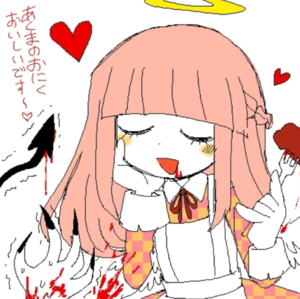31434496
DT L1 Identifying User Needs
Descripción
Sin etiquetas
Mapa Mental por Maria Alexandru-Chidesciuc, actualizado hace más de 1 año
Más
Menos

|
Creado por Maria Alexandru-Chidesciuc
hace más de 4 años
|
|
Resumen del Recurso
DT L1 Identifying User Needs
- User: The person who uses the end product
- User Centred Design- (sometimes called
Human Centred Design) -is based
around the identified user of the
product. The user is the main focus
throughout the whole design process of
the product and is constantly consulted
at every stage of development – every
iteration of the design process.
- User Centred Design- (sometimes called
Human Centred Design) -is based
around the identified user of the
product. The user is the main focus
throughout the whole design process of
the product and is constantly consulted
at every stage of development – every
iteration of the design process.
- Client: The client can either be the
user or the company or organisation
that commissions the product to be
designed and made for them, they
then pass or sell the product onto
the end user.
- Target Market: a particular group of
consumers at which a product or service is
aimed
- The target market is the group of
people or an organisation that has
been identified by the designer or
client for a particular product.
- The target market is the group of
people or an organisation that has
been identified by the designer or
client for a particular product.
- QUALITATIVE: (Non- numerical Data) Helps to
understand concepts opinions and
experiences.
- QUANTITATIVE: (Numerical Data) Helps to find
patterns, make predications based on statistics.
- Examining existing products – The Ergonomics of a product.
- ERGONOMICS: Ergonomics is the study of how humans use
and interact with a product or system. It involves stuff like:
anatomy, physiology, mathematics, engineering, psychology.
It tries to measure physical and emotional connections to the
physical world.
- ERGONOMICS: Ergonomics is the study of how humans use
and interact with a product or system. It involves stuff like:
anatomy, physiology, mathematics, engineering, psychology.
It tries to measure physical and emotional connections to the
physical world.
- Examining existing products and designing new ones – Form,
Function and Accessibility
- FORM: Form is the 2D and 3D aesthetics of a product,
the look and feel of a product. It might include:
- shape
- Colour
- Texture materials
- Structure
- shape
- FUNCTION: Function focuses on what the
product is designed to do
- Sometimes a product has more or special
functions than a similar product, this is
called a Unique Selling Point - USP
- Sometimes a product has more or special
functions than a similar product, this is
called a Unique Selling Point - USP
- ACCESSIBILITY: who can access or use the product or
system. Some products can only be used by a particular
user or groups of users. Increasingly designers strive to
make their products and systems more inclusive. They might do this by:
- using data to inform
- making products adaptable
- making products repairable
- making products adjustable
- using data to inform
- FORM: Form is the 2D and 3D aesthetics of a product,
the look and feel of a product. It might include:
¿Quieres crear tus propios Mapas Mentales gratis con GoConqr? Más información.
